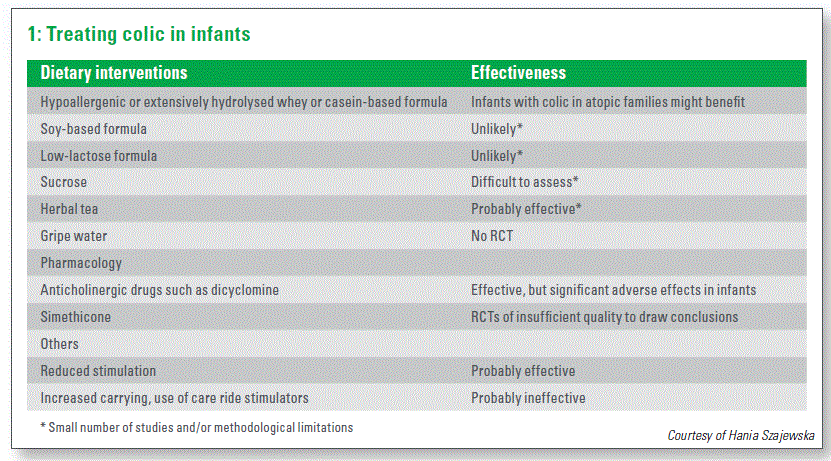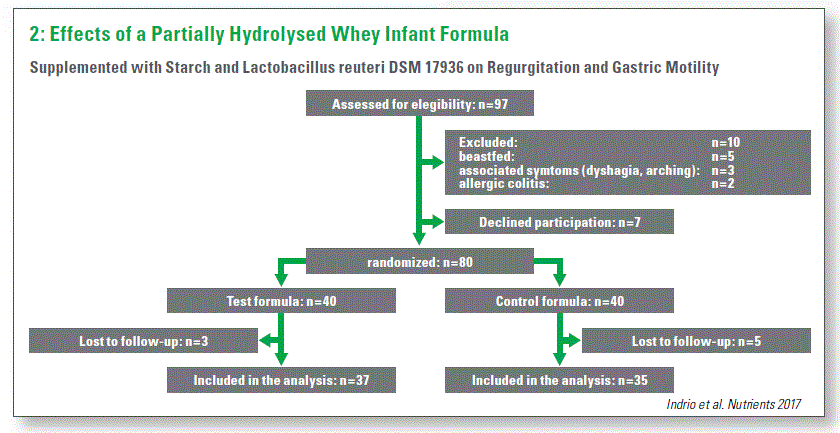Lactobacillus reuteri for GER and Infantile Colics – Where do we stand?
Lactobacillus reuteri for GER and Infantile Colics – Where do we stand?
Flavia Indrio
The pathophysiology of f FGID is common. This condition could be considered a disease because more than one organ is involved. I like to define FGID as a lack of communication among the organs. Maybe they talk different languages and there is still no interpreter to “translate for the different organs involved in the patophisiolog.
What is new in more and more studies is the role of the microbiota. Dysbiosis became the central part of this disease. There are a a lot of studies and the study by Carolina de Werth was basically the first to show the profound microbiome differences between children affected by colic and children with no colic. There is slower colonization, lower diversity and lower stability. The richness of microbiota is the basis for a well-functioning intestine and de Werth showed that there is a low butyrate-producing species which is very well known to get involved to develop intestinal motility. There are also a low rates of lactobacilli and bifidobacteria with anti-inflammatory effects.
Treatment
Before the widespread use of probiotics, we basically did not have any therapeutically effective treatment (Chart 1).
I will focus on Lactobacilli reuteri. This strain has to be shown to have an effect on the gut-brain-axis, on visceral hypersensitivity and on motility. There a lot of studies of colic which show the effect of this strain in the different organs involved in the pathology of colic.
A summary of in vitro and in-animal studies shows that these strains of L. reuteri modulate the immune response (Rhoads et al., 2012) and intestinal in- flammation is one of the most important factors in the pathophysiology of colic. Another study shows that L. reuteri DSM 17938 or its conditioned medium reduces the nerve-firing capsaicin in jejunal segments of mice (Perez-Burgos et al., 2015).

Clinical scientific evidence
Looking at RCTs, we have more studies on L. reuteri than any other strain. A new meta-analysis confirmed that among all therapeutic approaches, L reuteri is the best in colic (Sung et al.,2018). A paper collected and evaluated the data of the randomized control trials in order to create this kind of individual patient data meta-analysis. They examined patient by patient and put together all the data. The result was that crying or fussing was improved by these strains of probiotic. And they also divided breastfed infants and formula-fed infants. In this meta-analysis, the number of breastfed infants was the majority.
This is the first Individual Patients Data Meta-Ana- lysis (IPDMA) and the most definitive method to assess the effectiveness of L. reuteri DSM17938 in managing infants with colic. L. reuteri DSM17938 is effective in breastfed infants and should be recommended in this subgroup of infants with colic.
Our group of research in Bari University try to go further in the field of prevention.
We retrospectively analyzed that a baby affected by colic during regurgitation und constipation in infancy has a high incidence of FGID and abdominal pain. We started a multicenter randomized double-blind clinical trial on a prophylactic use of this strain of probiotic to prevent and just to avoid those two or three weeks of inflammation. Around 500 children were included in the study, and we randomized to receive this strain of L. reuteri or placebo. After three months of treatment. there was a lower incidence of colic regurgitation and a higher number of evacuations. We also measured the economical impact on the pediatric visits, on the loss of parents’ work, emergency department access and the use of cimetropium bromide and other herbal products, and what we find saved 88 euros for the family and 104 euros for the community.
So the conclusion of this study on colic is: probiotics are needed for the treatment of infant colic, with parental reassurance. These two are the only therapeutic procedure that work. But more studies are needed for more evidence regarding the preventive use of probiotic . The treatment for colic should to be continued until intestinal maturation is complete around 4 to 5 months of age.
Conclusion
- With parental reassurance, the use of probiotics is the only therapeutic procedure that works.
- Lactobacillus reuteri DSM19738 is the most studied. And the final word seems to have been written about its efficacy on breastfed babies.
- For the prevention of infantile colic, more studies are needed.
- The treatment needs to be continued until intestinal maturation is complete.
Regurgitation
Regurgitation occurs frequently in infants and is a common cause of concern for parents. 43% of mothers regarded regurgitation as a health problem. Decreasing the regurgitation is often seen as the most welcomed intervention that physicians can provide.
In treatment, there is much confusion between physicians and parents who ask for PPI.
- 88% of infants with regurgitation symptoms were classified as GERD
- The use of PPIs in infants has been debated:
- PPIs are over prescribed by 82%
* 39% were prescribed for unexplained crying
* 36% were prescribed for uncomplicated regurgitation
- Only 1.8% of PPI use is completely adherent to GERD practice guidelines
- Use of PPI dramatically alters the intestinal microbiota
- Evidence is sparse and of low quality
It is important to distinguish regurgitation from GERD.
If a baby who weighs five kilograms eats 180 ml, it is comparable to an adult who consumes 3 litres of liquid in 10 min. So, of course, we can have the possibility of regurgitation.
Possible therapeutic options are:
- No seated position for the infant
- Do not overfeed
- Thickened feedings
- No smoking by the caregiver
What about L. reuteri? In 2008, there was the first study in my group; our aim was to show there was a different maturation in preterm babies and if we can improve maturation. So we evaluated the motility of premature babies in the gastric emptying rate and we matched not only with a placebo but also with breastfed babies.
L. reuteri Protectis improved gastric motility in pre-term infants (Indrio 2008). Oral supplementation of Protectis for 30 days improved the gastric emptying rate in formula-fed preterms and brought it very much closer to the rate among the breastfed babies.
After this, we evaluated the supplementation of this strain L.reuteri DSM 17598 in formula-fed infants affected by regurgitation. We diagnosed it with functional regurgitation and in this study we compared the strain to the placebo and we found an improved gastric emptying rate and we found a fasting antral area. That is an area of the stomach when the babies are fasting. If the diameter is big, it can act as a trigger to lower regurgitation.
And there was a new study in 2017 where we used a partially hydrolysed whey formula, supplemented with starch and L. Reuteri DSM 17598 and the other with placebo. We analyzed 72 randomized infants (37 test /35 placebo formula). All babies were diagnosed with functional regurgitation on the basis of Rome III and Rome IV criteria. We found lower fasting antral area. And the daily number of regurgitations decreased during the second week of using that formula (Chart 2).

Conclusion
- Probiotics could represent another therapeutic option together with parental reassurance and thickened formula (using both procedures together also be an option).
- For the prevention of functional regurgitation with probiotic, more studies are needed (only 1 study so far).
- Lactobacillus reuteri DSM 17938 is the only strain studied so far.
- The treatment needs to be continued until intestinal maturation is complete or until complementary feeding is added.
- L. Reuterii DSM 17938 is the more thoroughly studied strain and may
- be considered for the management of infantile colic
- L. Reuterii DSM 17938 could be considered as a therapeutic option for functional regurgitation.